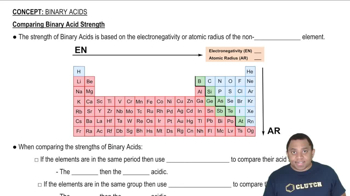Here are the essential concepts you must grasp in order to answer the question correctly.
Molarity (M)
Molarity is a measure of concentration defined as the number of moles of solute per liter of solution. It is commonly used in chemistry to express the concentration of a solution. For example, a 0.500 M KCl solution contains 0.500 moles of potassium chloride dissolved in one liter of water, providing a clear quantitative measure of how much solute is present.
Recommended video:
Mass Percent (% mass)
Mass percent is a way to express concentration as the mass of solute divided by the total mass of the solution, multiplied by 100. For instance, a 0.500 mass % KCl solution means that there are 0.500 grams of KCl in every 100 grams of the solution. This measurement is useful for understanding the composition of solutions in terms of mass rather than volume.
Recommended video:
Comparing Concentrations
To determine which solution is more concentrated, one must convert the mass percent concentration into molarity or vice versa. This involves knowing the density of the solution and the molar mass of the solute. By comparing the two concentrations in the same units, one can accurately assess which solution has a higher concentration of KCl.
Recommended video:
Comparing Binary Acid Strength
 Verified step by step guidance
Verified step by step guidance


